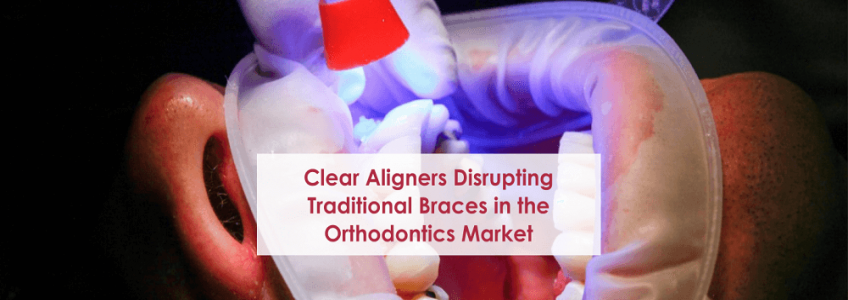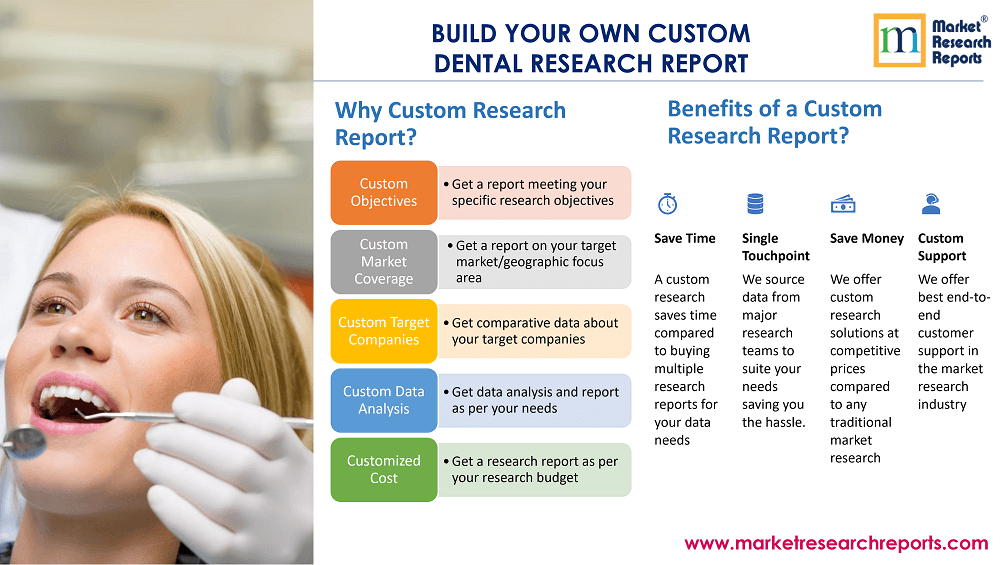Clear aligners are orthodontic devices used to straighten teeth, are made of transparent, plastic material, and are custom-made for each patient based on a 3D digital impression of their teeth. This technology allows for creating clear aligners specifically designed to fit each patient's unique needs, resulting in more effective and efficient treatment.
Clear aligners are becoming increasingly popular because they can straighten teeth without using metal brackets and wires. This makes them a more discreet option for patients concerned about the appearance of traditional braces. Clear aligners are also more comfortable than conventional braces, as they do not have any sharp edges or brackets that can irritate the mouth.
Invisible orthodontics refers to a type of orthodontic treatment that uses clear, removable aligners instead of traditional metal braces. The aligners are custom-made for each patient and fit snugly over the teeth, gradually moving them into proper alignment. They are virtually invisible when worn, making them a popular choice for people concerned about the appearance of traditional braces.
Visible orthodontics refers to the traditional type of orthodontic treatment that uses metal or ceramic braces attached to the teeth. These braces are made up of brackets, wires, and elastic bands and are more noticeable than invisible aligners. However, advances in materials and techniques have made modern visible orthodontics more comfortable and cosmetic than in the past.
3D printing technology plays a significant role in producing clear aligners in the orthodontics and
dental industry. The technology allows for the creation of clear, custom-fit clear aligners specifically designed for each patient's unique needs, resulting in more effective and efficient treatment. 3D printing technology produces clear aligners with greater accuracy and precision, allowing faster production and lower costs. The use of 3D printing technology in producing clear aligners has led to a growing demand for the product and increased competition in the orthodontics market.
A few of the visible advantages of 3D printing:
- Increased Precision: 3D printing technology allows the creation of clear aligners designed with high precision and accuracy, which results in a more effective treatment outcome.
- Faster Production: 3D printing technology enables quick production times for clear aligners, benefiting orthodontic practices and patients. This can result in shorter treatment times and reduced wait times for patients.
- Cost-Effective: 3D printing technology allows for the production of clear aligners at a lower cost than traditional manufacturing methods. This has led to a reduction in the price of orthodontic treatment for patients.
- Customized Fit: 3D printing technology creates clear aligners tailored to each patient's needs. This results in a more comfortable and effective treatment.
- Improved Aesthetics: Clear aligners are made of clear plastic material and are virtually invisible when worn. This makes them a popular choice for patients concerned about the appearance of traditional braces.
- Greater Comfort: Clear aligners are more comfortable than traditional braces as they do not have any brackets or wires that can irritate the mouth. This has made them a popular alternative to traditional braces.
Align Technology, Inc. is a global medical device company primarily engaged in designing, manufacturing, and marketing Invisalign® clear aligners, iTero® intraoral scanners and services for dentistry, and exocad® computer-aided design and computer-aided manufacturing (“CAD/CAM”) software for dental laboratories and dental practitioners.
Malocclusion and Clear Aligner (Invisalign® system)
Malocclusion is a term used to describe a misalignment of the teeth or jaws. It is a common dental condition that affects the bite and how the upper and lower teeth fit together. Malocclusion can be caused by various factors such as genetics, injury, or habits such as thumb-sucking. The severity of malocclusion can range from mild to severe and can impact a person's oral health, speech, and appearance. Orthodontic treatment, such as braces or clear aligners, is commonly used to correct malocclusion and improve the alignment of the teeth and jaws.
Malocclusion is one of the most prevalent clinical dental conditions, affecting approximately 60% to 75% of the global population. Annually, about 21 million people globally elect treatment by orthodontists.
Most orthodontic patients continue to have their malocclusions treated with traditional methods such as metal archwires and brackets, referred to as braces, augmented with elastics, metal expanders, headgear or functional appliances, and other ancillary devices as needed. Upon completion of the treatment, the dental professional may recommend the patient use a retainer appliance. Of the 21 million cases started, Align Technology estimates that approximately 90%, or 19 million, could be treated using the Invisalign system. In addition, globally, approximately 500 million people with malocclusion could benefit from straightening their teeth.
This represents a significant opportunity for Align Technology as it expands the market for orthodontics by training more doctors, including GPs and orthodontists, educating more consumers about the benefits of straighter teeth using the Invisalign system and connecting consumers with an Invisalign-trained doctor of their choice.
The Invisalign® system is a proprietary method for treating malocclusion based on a proprietary computer-simulated virtual treatment plan and a series of doctor-prescribed, custom manufactured, clear polymer removable aligners. Align Technology currently purchase resin and polymer, the primary raw materials used in manufacturing process for clear aligners, from a single source.
Invisalign® Product Umbrella
- Invisalign First Phase 1 Package is designed specifically for younger patients between the ages of seven and ten years, who frequently have a mixture of primary/baby and permanent teeth.
- Phase 2 Package is complementary to Invisalign First Phase 1 and is generally consistent with Invisalign Comprehensive Package. After a patient completes Invisalign First Phase 1, doctors can purchase a Comprehensive Phase 2 Package for that same patient.
- Invisalign Non-comprehensive Packages offer a variety of lower-priced treatment packages for less complex orthodontic cases, noncomprehensive relapse cases, or straightening before restorative or cosmetic treatments, such as veneers.
- Invisalign Go Packages are offered in various markets Invisalign Go and Invisalign Go Plus are streamlined Non-Comprehensive packages designed for GPs to more easily identify and treat patients with mild malocclusion.
- Invisalign G8 with SmartForce® Activation has broadly released in early 2021; Invisalign G8 with SmartForce Aligner Activation is a clear aligner biomechanical innovation designed to optimize tooth movements and further improve predictability for frequently treated crowding, crossbite, and deep bite cases through the targeted application of force to teeth through surface contours on the aligners that help control the location, direction, and intensity of tooth movement.
- SmartTrack clear aligner: clear aligner material is a patented, custom-engineered Invisalign clear aligner material that delivers gentle, more constant force considered ideal for orthodontic tooth movements.
Clear Aligner (Invisalign® system) Competition
Due in part to market opportunities and the expiration of certain of the company's key patents beginning in 2017, competition in the clear aligner market is increasing. The number and types of competitors are diverse and growing rapidly. They vary by segment, geography, and size. They include new and well-established regional competitors, as well as larger companies or divisions of larger companies with substantial sales, marketing, financial research capabilities, and existing dental market channels.
Company's competitors also include direct-to-consumer (“DTC”) companies that provide clear aligners using a remote teledentistry model requiring little or no in-office care from trained and licensed doctors, doctors, and DSOs who can manufacture custom aligners in their offices using modern 3D printing technology. Large consumer product companies may also enter the orthodontic supply market.
Align Technology Financials
The company's net revenues remain largely dependent on sales of our Invisalign system of clear aligners and iTero intraoral scanners.
Revenues of USD 3.95 billion, an increase of 59.9% year-over-year; Clear Aligner revenues of USD 3.28 billion, an increase of 54.5% year-over-year reflecting the expanding opportunity for Invisalign system treatment among adults globally, as well as the underlying orthodontic market as we continue to build awareness of the Invisalign brand and drive utilization among teens and younger patients through increased consumer marketing.
- Americas Clear Aligner revenues of USD 1.54 billion, an increase of 52.9% year-over-year;
- International Clear Aligner revenues of USD 1.5 billion, an increase of 55.2% year-over-year;
- Clear Align volume increase of 54.8% year-over-year and Clear Aligner volume increase for teenage patients of 47.3% year-over-year
Global Clear Aligners Market
Global Clear Aligners market size was valued at USD 5707.2 million in 2022 and is forecast to a readjusted size of USD 7491.1 million by 2029 with a CAGR of 4.0% during the review period. (The influence of COVID-19 and the Russia-Ukraine War were considered while estimating market sizes)
Global key players of clear aligners (invisible braces) include Align Technology, SmileDirectClub, Dentsply Sirona, Angelalign, Smartee, etc. The top five players occupy a share of about 75%. The United States is the largest producer of clear aligners (invisible braces) and holds a share of over 70%, followed by China. North America is the largest market, having a share of about 43%, followed by Asia-Pacific and Europe, both holding a share of about 24 percent.
The orthodontic market is a dental care industry sector specializing in diagnosing, preventing, and correcting misaligned teeth and jaws. Orthodontics involves using braces, clear aligners, and retainers to align teeth and improve a person's bite and smile.
The orthodontic industry has grown significantly in recent years, driven by a growing demand for cosmetic dentistry and increasing awareness of the importance of oral health. Technology advancements have also led to the development of new and improved orthodontic treatments, such as clear aligners, that are more effective, comfortable, and affordable.
The orthodontic industry comprises a range of businesses, including orthodontic practices, dental labs, and manufacturers of orthodontic devices and supplies. Orthodontists are trained specialists who diagnose and treat orthodontic conditions and play a crucial role in the industry.
The orthodontic industry is highly regulated, with strict standards for the training and certification of orthodontists and the safety and efficacy of orthodontic devices. The industry is also subject to economic factors, such as consumer spending and insurance coverage, which can affect its growth.
The dental archwires comprise flexible wires used in orthodontic treatment to apply force to teeth and guide them into their proper positions. They are typically made of stainless steel, nickel-titanium, or other materials and are placed in brackets attached to the teeth. The archwire is changed periodically during treatment to apply increasing levels of force and continue the movement of the teeth until they are in their desired position.
Ligatures are small rubber or wire components used in orthodontics to secure the archwire to the brackets on the teeth. They play an important role in orthodontic treatment, as they provide a means of applying force to the teeth and moving them into the desired position.
There are two main types of ligatures: elastomeric ligatures and wire ligatures:
Elastomeric ligatures are small rubber bands that are placed over the brackets to secure the archwire in place. They are commonly used in orthodontic treatment and are available in various colors, allowing patients to personalize their braces. Elastomeric ligatures are easy to change and provide a comfortable and effective means of securing the archwire to the brackets.
Wire ligatures are small wires used to secure the archwire to the brackets. They are typically made of stainless steel or titanium and are more durable and long-lasting than elastomeric ligatures. Wire ligatures are used in orthodontic treatment where a higher level of force is needed to move the teeth, and they provide a strong and secure means of attaching the archwire to the brackets.
Both elastomeric and wire ligatures play an important role in orthodontic treatment, and the choice between them will depend on the individual's orthodontic needs and the orthodontist's clinical judgment.
Anchorage appliances are orthodontic devices that provide stability and control during the movement of teeth during orthodontic treatment. They are used to counteract the archwire's forces and ensure that the teeth move in the desired direction. Examples of anchorage appliances include mini-screws, which are small screws that are placed into the jawbone to provide stability, and bands and buccal tubes, which are metal components attached to the molars to provide anchorage during treatment.
Bands and buccal tubes are metal components cemented to the molars to provide stability during orthodontic treatment. Bands are placed around the entire tooth, while buccal tubes are attached to the outside of the molars. They are used to secure the teeth' archwire and brackets and provide a stable anchorage point for tooth movement.
Miniscrews are small screws placed into the jawbone to provide stability during orthodontic treatment. They are used to counteract the archwire's forces and ensure that the teeth move in the desired direction. Miniscrews is particularly useful in cases where traditional orthodontic techniques are ineffective, as they provide a secure anchorage point for tooth movement.
These anchorage appliances are important tools in orthodontics, as they help ensure that the teeth move in the desired direction and that the treatment is effective and efficient. The choice of anchorage appliance will depend on the individual's orthodontic needs and the orthodontist's clinical judgment.
In orthodontics, brackets refer to small metal or ceramic components attached to teeth to hold an archwire in place. There are two main types of brackets: fixed brackets and removable brackets.
Fixed brackets (also known as traditional braces) are bonded to the teeth and are not removable. They are typically made of metal or ceramic and are used to correct a wide range of orthodontic issues, including misaligned teeth, crowding, and bite problems. Fixed brackets work by applying continuous pressure to the teeth, gradually moving them into the correct position.
Removable brackets (also known as removable appliances or clear aligners) are not bonded to the teeth and can be removed for cleaning and eating. They are typically made of clear plastic and are custom-made to fit the teeth. Removable brackets work by applying gentle pressure to the teeth, gradually moving them into the correct position. They are a popular alternative to fixed brackets, as they are less noticeable and more comfortable to wear.
Both fixed and removable brackets have their advantages and disadvantages, and the choice between them depends on the individual's orthodontic needs and preferences. The orthodontist will evaluate the patient's dental condition and recommend the most appropriate type of bracket for their treatment.
Custom Dental Market Reports
Our Custom dental market research service helps you gain valuable insights into the needs and preferences of your target market and the industry's competitive landscape. Businesses can obtain data-driven information on consumer behavior, market trends, and potential growth opportunities by conducting surveys, focus groups, and other forms of research. This information would useful for making informed business decisions, such as product development, marketing strategies, and pricing. Additionally, custom research can help businesses identify potential risks and challenges, allowing them to proactively address them and maintain a competitive edge.







